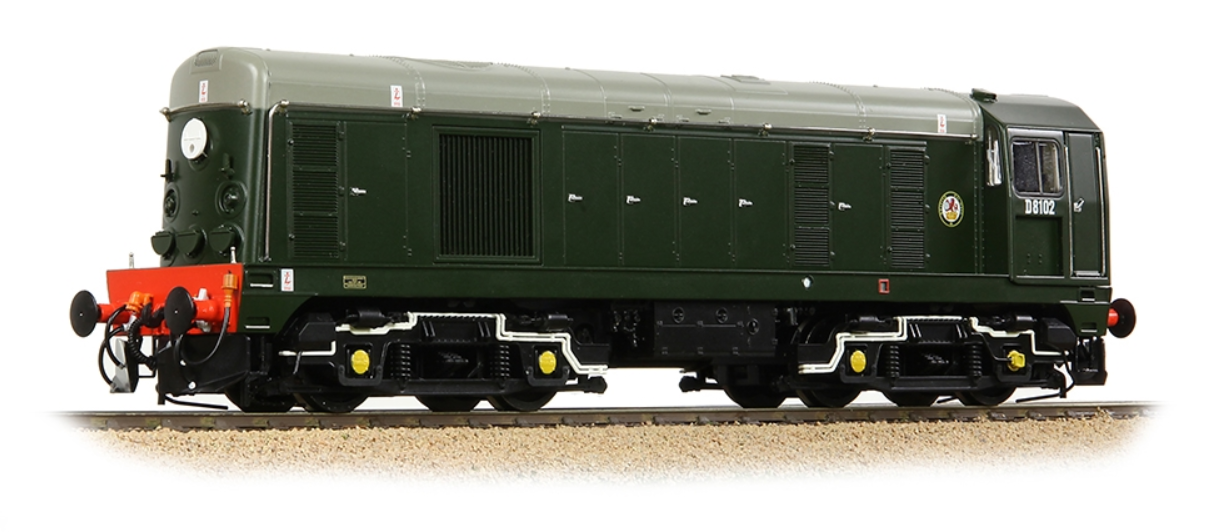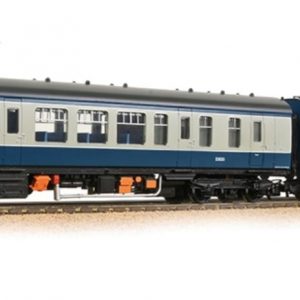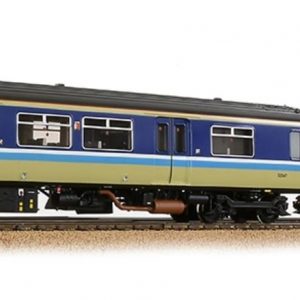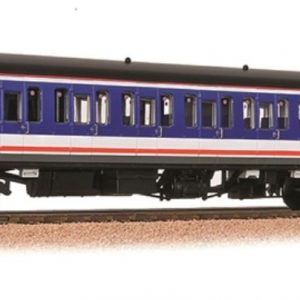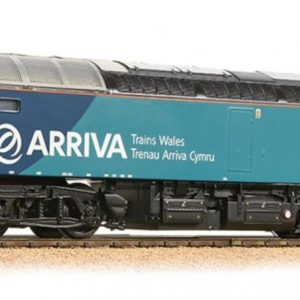Description
This latest generation Bo-Bo diesel locomotive from Bachmann Branchline brings the classic BR Class 20/0 right up to date, capturing the subtle lines of these distinctive locomotives. The high level of detail is brought to life by the intricate livery application, whilst the powerful drive mechanism, Plux22 DCC interface and a full suite of lighting offers the perfect complement to the model’s good looks.
- Bachmann Branchline OO Scale
- Era 5
- Pristine BR Green (Roundel) livery
- Running No. D8102
- Equipped with a Plux22 DCC Decoder Socket
- Length 190mm
DETAIL VARIATIONS SPECIFIC TO THIS MODEL
- Headcode Discs
- Large Cab Side Windows
- Tablet Catcher Recess and Tablet Catcher (optional part supplied in the Accessory Pack)
- One Piece Radiator Shutter
- Two Piece Bodyside Handrail (RHS)
- Early-style Fluted Bogie Equalising Beams
- Mechanical Speedo Drive
- Original Battery Boxes
- Four Sandboxes per Bogie (Inner Pairs are supplied in the Accessory Pack)
- Round Oleo Buffers
- Scottish-Style Bufferbeam
- Nose-end Solebar Handles
- Snowploughs (optional part supplied in the Accessory Pack)
BACHMANN BRANCHLINE CLASS 20 SPECIFICATION
MECHANISM:
- Five pole, twin shaft motor with two flywheels providing drive to both bogies
- All axle drive
- Electrical pickup from all wheels
- Separate metal bearings fitted to each axle
- Diecast metal chassis block and bogie towers
- Diecast metal gearboxes, with gearing arranged for prototypical running speeds and haulage capabilities
- 5mm (OO gauge) wheels to NEM310 & NEM311 standards with authentic profile and detailing
- Detachable coupling pockets to NEM362 standards fitted to each bogie
- Designed to operate on curves of second radius (438mm) or greater
DETAILING:
- Bogies constructed from multiple components featuring full relief detail
- Rotating radiator fan (un-motorised)
- Separately applied metal detail parts, including handrails, grab handles, sand pipes and etched fan grilles
- Sprung metal buffers
- Each model supplied with a full set of decorated, model-specific bufferbeam pipework and accessory parts
LIGHTING:
- Directional lighting, including headlights and high intensity headlights where applicable, switchable on/off at either end on DCC or Analogue control
- Authentic light colours and temperatures selected for each model based on era and application
DCC:
- Plux22 DCC decoder interface
LIVERY APPLICATION:
- Authentic liveries applied to all models
- Multiple paint applications employed on each model using BR and corporate specification colours
- Logos, numerals and text added as appropriate using multi-stage tampo printing using authentic typefaces, logos and colours
- In addition, where applicable Etched Nameplates and Plaques are also provided
CLASS 20/0 HISTORY
The British Railways Board’s (BRB) 1955 modernisation plan called for a change to alternative forms of traction and manufacturers were asked to produce trial or initial designs for evaluation. English Electric adapted an existing design based on an export model for a 1,000bhp diesel and 20 were built as a pilot scheme for assessment.
The first batch was built in 1957 and the diesels were assigned to work from Devon’s Road depot, East London. The design was a success from the start and by 1962 a total of 127 had been built. Following assessment of all the Type 1 diesels, BRB placed a further order increasing the total to 228 by 1968 and the design became the BR standard for 1,000bhp diesel locomotives. With the introduction of TOPS the locomotives were designated Class 20 and renumbered 20001 to 20228. The locomotives were principally designed for freight work but also saw service on summer passenger trains where train heating was not required. The Class 20s worked over the Eastern, London Midland and Scottish regions as well as into Wales and were commonly associated with coal traffic. The only drawback the Class had was its single end cab, unlike modern designs that have a cab at each end. BR resolved this problem by regularly operating the Class 20s as pairs, nose to nose, and with the combined power of 2,000bhp they were able to haul the heavier block freight trains.
BR’s decision to switch to Type 5 and in particular Class 60 diesels in the late 1980s started a gradual withdrawal of the fleet, with just 28 left by 1994. A tribute to the design is that after 45 years the Class is still in service with DRS on mainline duties following refurbishment, the resulting locomotives being designated Class 20/3s. At least 28 of the class are now preserved.

